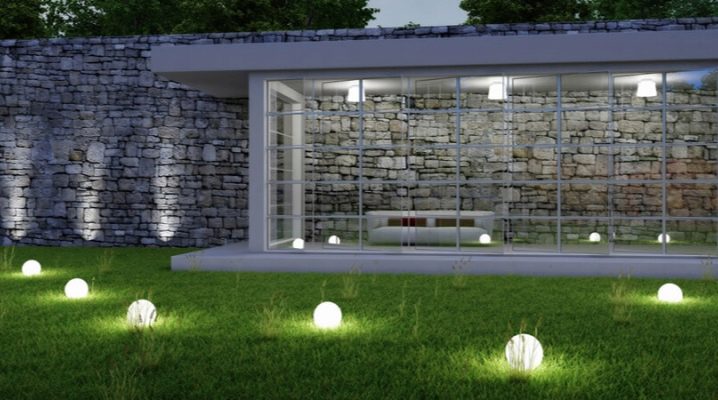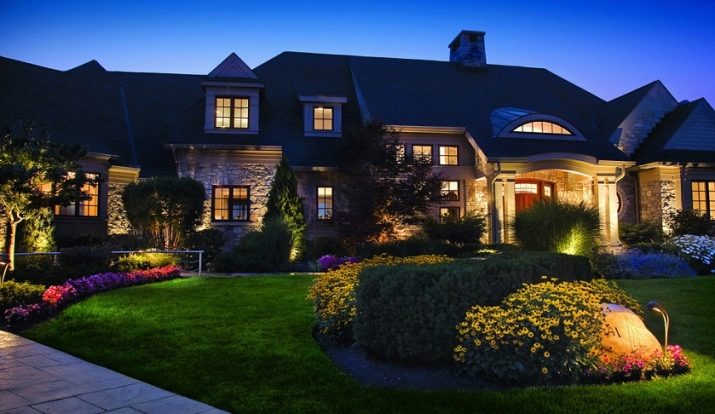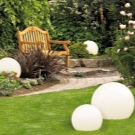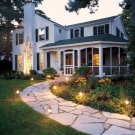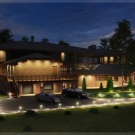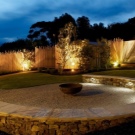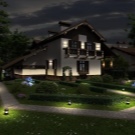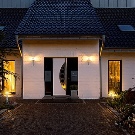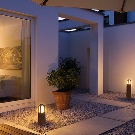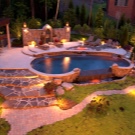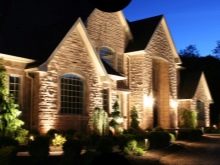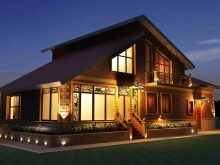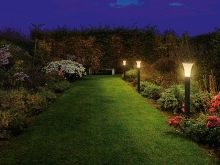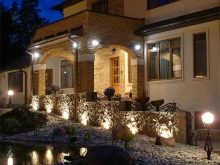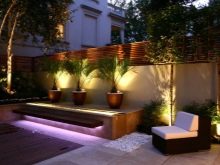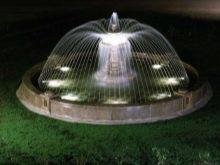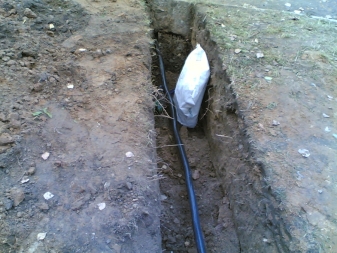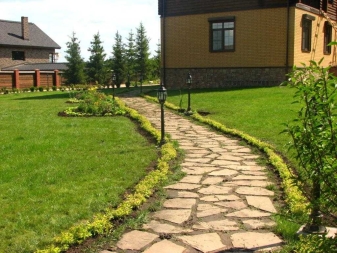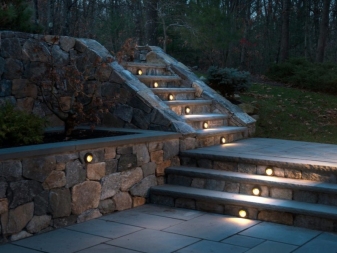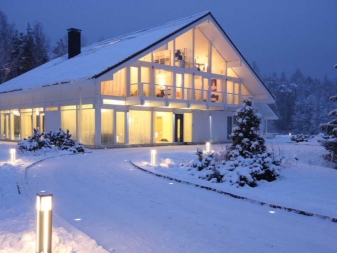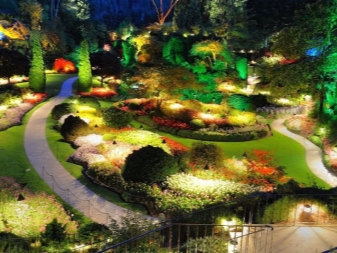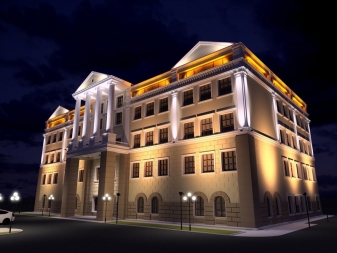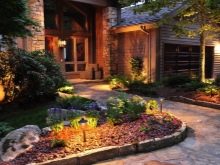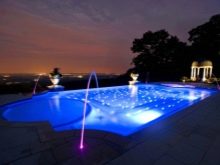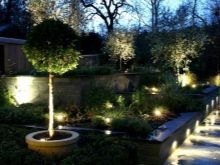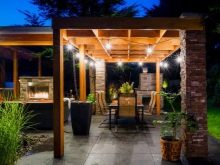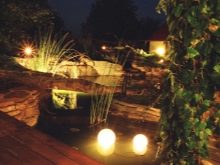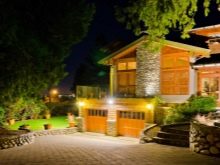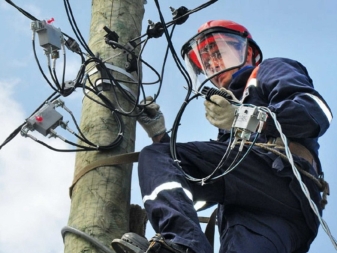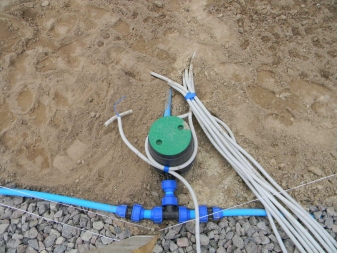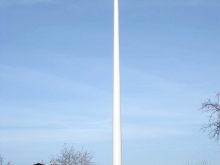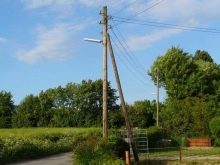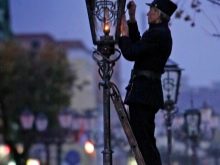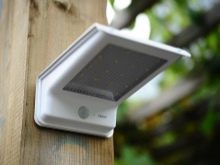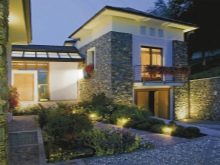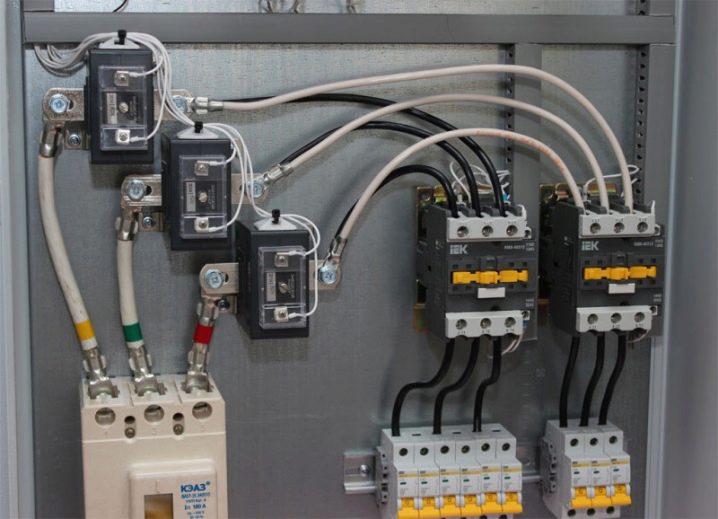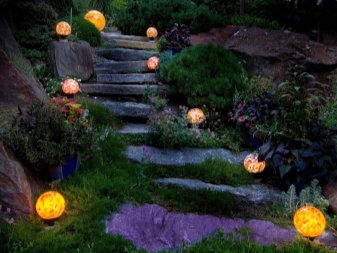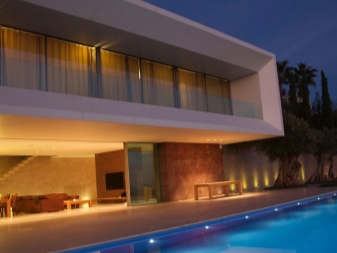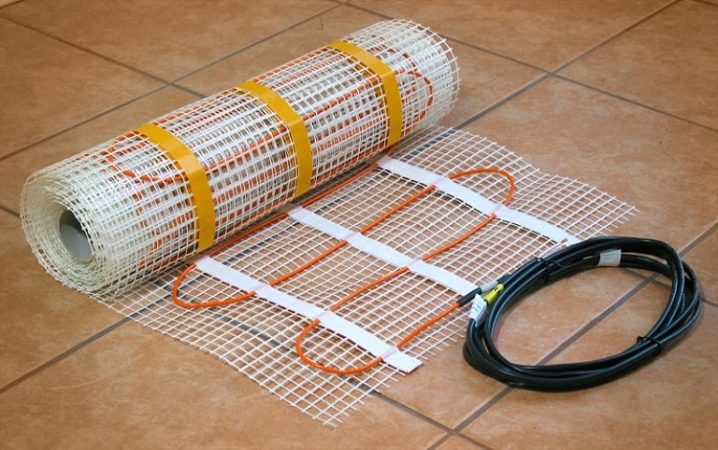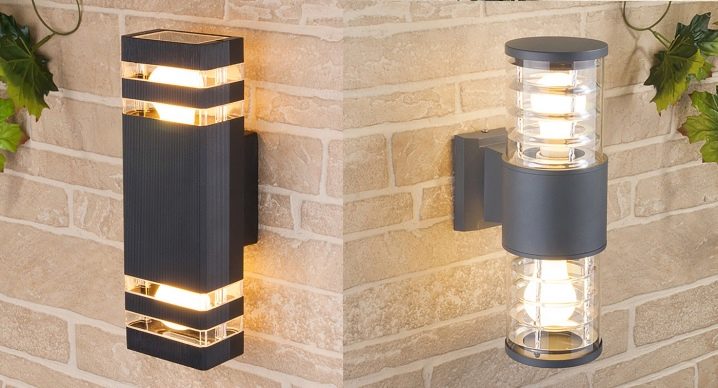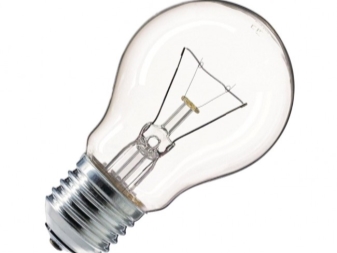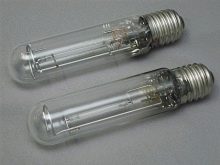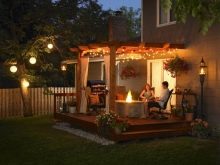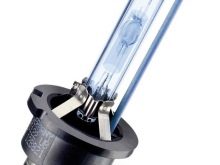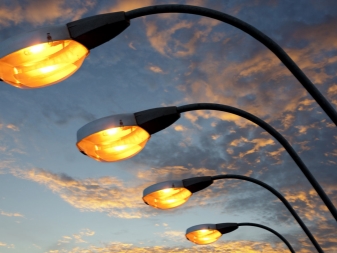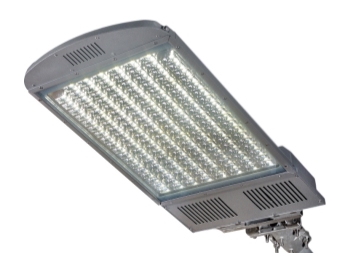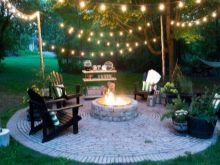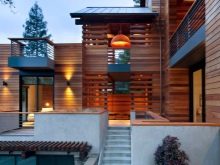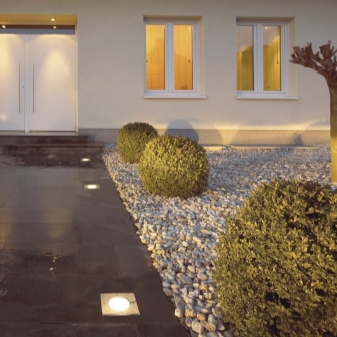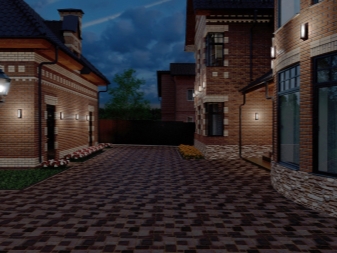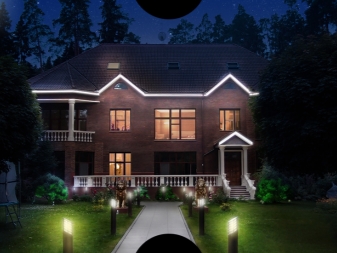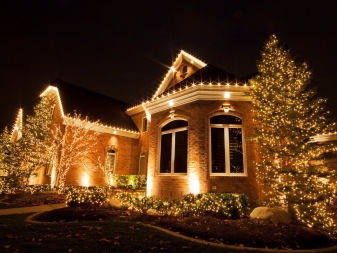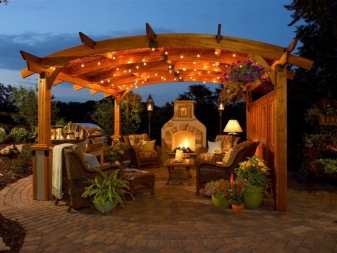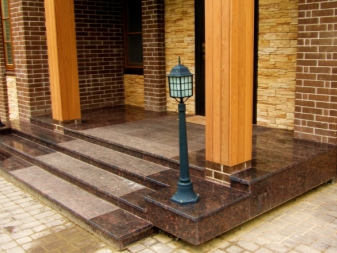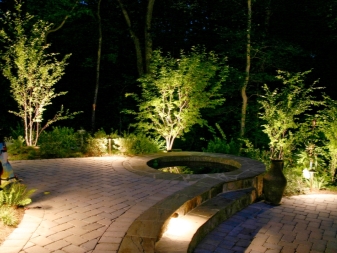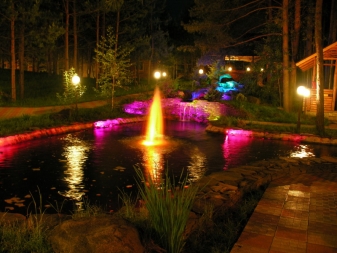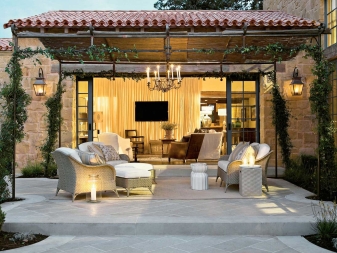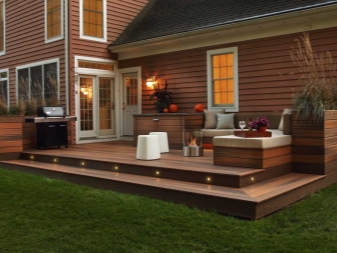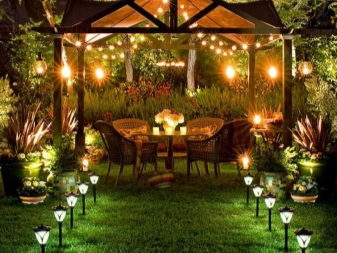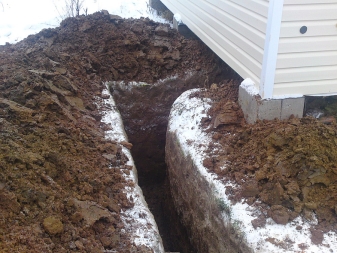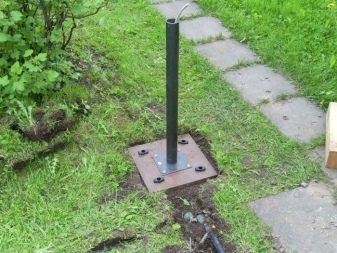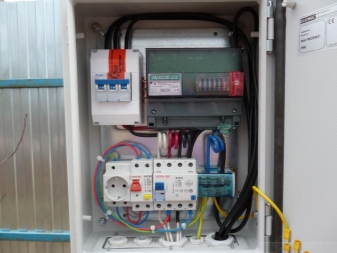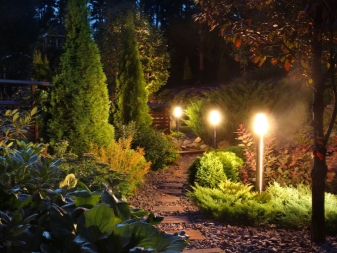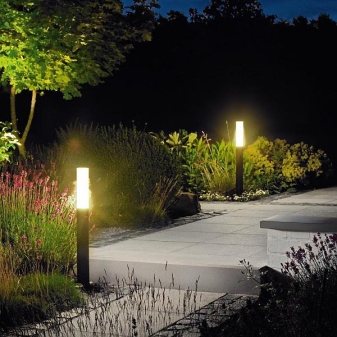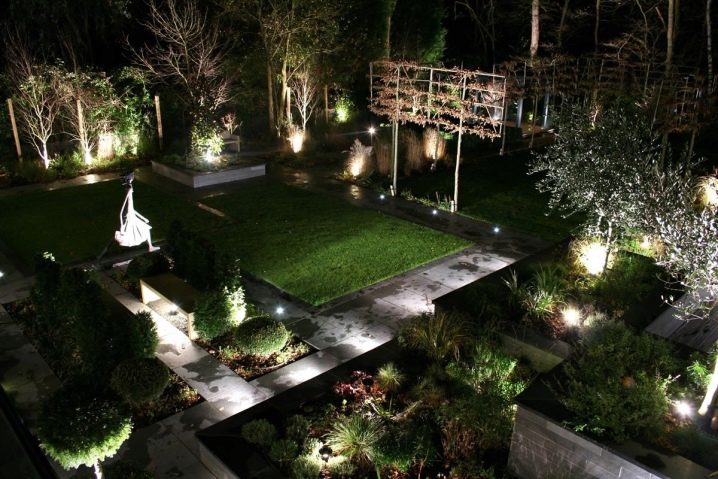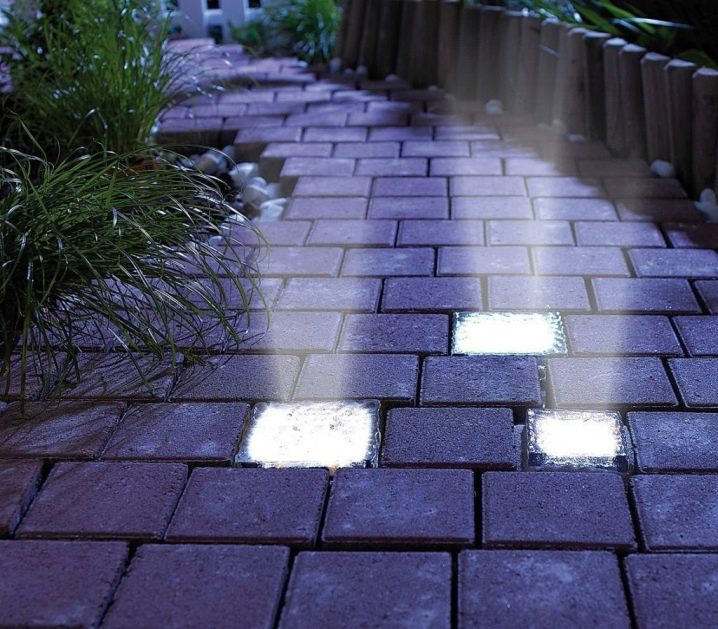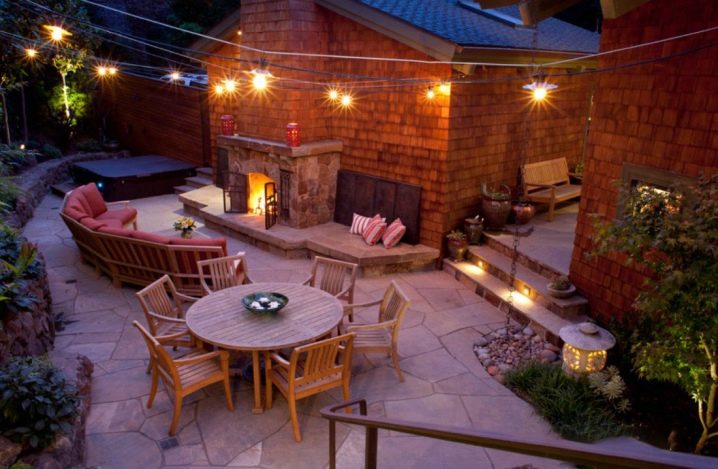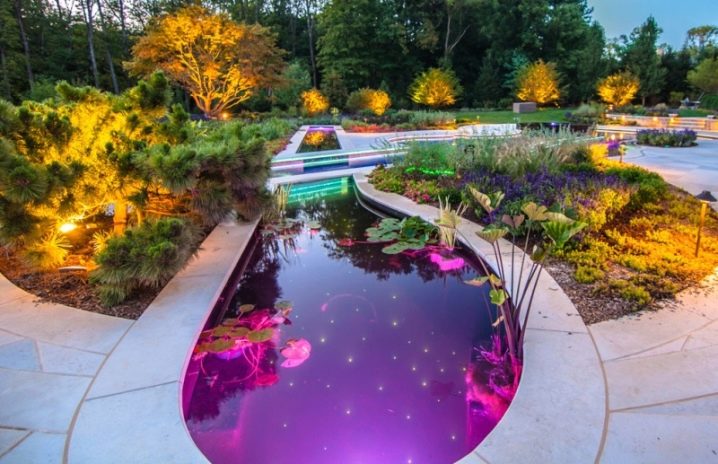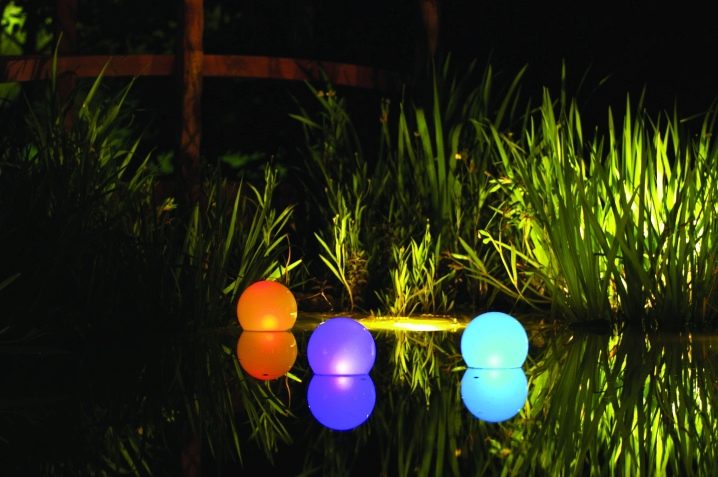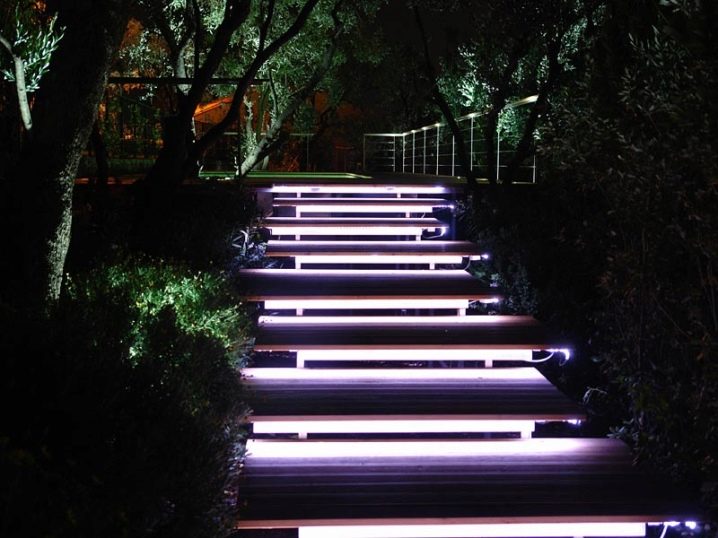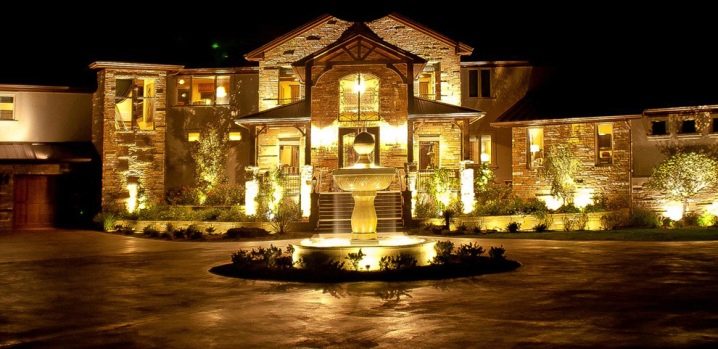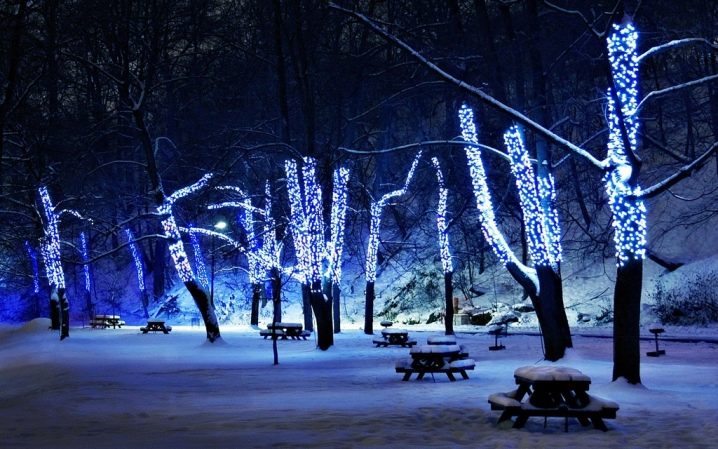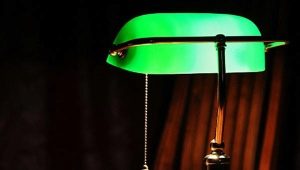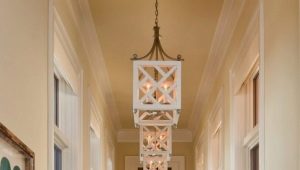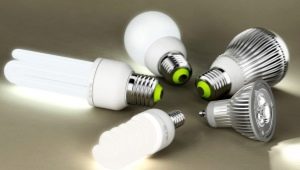Street lighting
To organize external lighting, emphasizing all the advantages of the house and the plot, you need to understand what kind of lamp is installed for what purpose, features of hidden wiring and similar trifles. Knowledge of the requirements that the device must meet is also one of the most important points. In a word, in order for street lighting to cope with its role as well as possible, you need to thoroughly prepare, plan everything, comprehend many details of this issue, then the result will be really impressive.
Features and regulations
The modern world cannot be imagined without street lighting, and if there are certain well-known rules for the selection of lamps inside the house, dictated by the style or proportions of the rooms, outdoor lighting requires a completely different approach. Here not so much aesthetic requirements come to the fore as the safety of the installation and the operational characteristics of the device itself.
It is a well-known fact that external lighting absorbs a huge amount of electricity, and it is quite logical to want to minimize costs. Designers have been working in this direction for a long time, so today we have light bulbs that absorb much less electricity or whole batteries that are charged from alternative sources of electricity.
The number of street lamps depends not only on the area that requires lighting. Often they perform a decorative function, allowing you to focus on particularly significant elements, for example, statues, fountains or plant compositions. All this must be taken into account when drawing up a landscape design project. Depending on the planned frequency of installation of the lamp depends on the power of the light sources selected for them.
The type of lamp depends partly on the required power of the bulb, and partly on its appearance. Recently, hidden backlighting is most often used, but this does not mean that they have completely abandoned all other species. Sometimes only a classic-style lamp can harmoniously complete an idea, frame it properly.
Returning to the idea of a design project, it is worth making a reservation that it’s compulsory if you want to get competent street lighting at the output, working without interruption. Often, lamps require wiring under the ground, in connection with which it is necessary to know exactly where it will have to pull the cables.
This will play into the hands of two more points:
- It will save money, because when you buy a large bundle of cable at once, you will most likely get a good discount.
- If you lay all the wiring at once, you will get a safer design, since the wires will not intersect with each other, moreover, they will be laid at the same depth, which will simplify repairs in case of malfunctions.
Aesthetics aesthetics, but primarily street lighting is designed to ensure the safety of people, protect them from accidents due to a fall due to an oversight. In our country there are a number of established standards for outdoor lighting. They are coordinated at the federal level, so it is strongly recommended to take them into account.
There are a number of requirements for lighting devices.
- Suitable size;
- Rational consumption of electrical energy;
- Ease of maintenance;
- Convenience in management.
In order to determine the required amount of illumination of a particular area, it is worth referring to Building Norms and Rules (SNiP) 23-05-95, which detail what the average illumination should be, what the distribution of illumination is necessary for a particular area.
Below are some recommendations based on SNiP:
- For outdoor pools, lighting should be installed so that it provides an average illumination level of 100 lux;
- For recreation areas, alleys, parks, the rate of illumination should be at least 10 lx;
- The average illumination of the entrance to the building should be kept at a level not lower than 6 lx;
- The emergency input should be illuminated at a level not lower than 4 lx;
- For the track in front of the entrance, the same restriction applies - at least 4 lux.
Based on the listed values, it will be possible to create a good external lighting on your backyard. If you study the SNiP in more detail, you can improve the layout of the lamps.
Be sure to remember about the federal standards of lighting when designing landscape design.Using them many times will reduce the risk of injury due to the lack of light in any area, and will also help determine the purchase of light bulbs.
Thus, it is necessary to take into account the features possessed by street lighting, as well as the restrictions imposed on external lamps, such as safety, durability, resistance to aggressive external environment, ease of maintenance, rational use of electricity, creating a sufficient level of illumination of the site.
What are the requirements for networks?
Regarding the installation of outdoor lighting there are clearly defined rules. First, they are performed by cable or air, and only using insulated wires. This limitation is set for security purposes.
In some cases, when there are serious grounds for that, it can be broken, and it is allowed to use uninsulated wires in air networks, but this is a very rare exception.
The wires must be waterproof, because moisture may cause a short circuit.Sometimes it is very dangerous, especially in a wooden house, when all the dwelling and attached structures can flare up due to a pair of sparks. The more insulation the wiring has, the better. If you plan to lay the cable under the ground, it is best to hide it in a special protective box made of polyvinyl chloride, protecting it from the corrosive substances contained in the soil.
If an air structure is installed, special attention should be paid to the supports. They must not conduct current, otherwise irreparable damage may occur in case of damage to the wires. The optimal solution is to opt for the following materials:
- Tree;
- Concrete;
- Reinforced concrete;
- Metal.
Despite the fact that the last two options conduct electricity well, they are supplied with additional grounding, which allows reducing the probability of an electric shock to zero. It is unlikely that they will ever be able to get rid of metal products, since they have not yet invented analogues for durability, flexibility and functionality.
There are different control mechanisms for street lights. Manual control is carried out by the dispatcher, which manually switches the lighting devices on and off.It is worth noting that such a control system is almost sunk into oblivion, as it often loses to modern automated versions for a number of signs.
The automated system works on two principles:
- The first type is equipped with motion sensors and a timer that determines how long after the movement the lamps should go out. The advantages include the absence of the need for manual adjustment and energy saving, and the disadvantages are the high sensitivity of the equipment. It is often enough to run a cat or a flying bird to make the lights work again, and this can go on all night.
- The following device is based on the degree of illumination of the street. The lamp is equipped with a photorelay that reacts to sunlight or lack thereof. It is quite light - the lantern does not burn, when it gets dark it lights up. This design absorbs more electricity than the previous version, however, it “behaves” more stably.
To control all lighting devices, a cabinet of street lighting is usually constructed, to which all wires of luminaires are connected.Here you can de-energize them all at once in case of malfunctions, or you can control each device individually by switching control modes.
When planning the supply of current should focus on the standards CH 541-82 "Instructions for the design of outdoor lighting in cities, towns and rural areas." It provides detailed guidance on the power and earthing systems of lighting networks.
In short, it follows from the Instruction that a voltage of 300/220 W can be used, but in some cases it must be passed through a distributor.
Despite the allowed power, it is necessary to remember that 24 W or 12 W luminaires are considered the safest. With proper selection of light bulbs, they will shine no worse, while consuming several times less electricity.
Remember that the power of luminaries varies depending on where they are: for example, in fountains or ponds it is not recommended to use luminaries more powerful than 24 W, while for lighting along the track it is quite possible to install standard 220 W lamps.
When installing cables, we must not forget about safety.For air networks, it is imperative to use additional supports so that in case of climate change there are no cable breaks. In addition to the fact that it can de-energize the entire site, a free-hanging, broken, torn cable is dangerous to human life. When laying the cable underground, it is recommended to cover it with a protective grid approximately 20 cm from the cable between it and the ground surface. If someone starts to dig in the wrong place, he will stumble on the grid and, most likely, will understand that high-voltage lines are passing there.
Types of landscape lamps
There is a huge variety of types of street lighting, designed to highlight individual objects, the whole area or only the area located close to the house. Analysis should begin with light bulbs, used as lighting elements in the lamps.
Traditionally for street lighting the following types of light bulbs are used:
- Incandescent lamps. This type is gradually becoming a thing of the past, giving way to more progressive options. Incandescent bulbs get very hot, transforming most of the electricity into heat, not light.They are distinguished by a short service life (about 1000 hours) and a small choice of light temperature (only warm yellowish light is possible). Incandescent bulbs require a lot of space for installation, the length of their cartridge is about 12 cm, so that they can be mounted only in large lamps.
- Gas discharge. More often you can come across the name “discharge lamps”, which this type of light sources received due to the fact that light is produced due to electrical discharge in gases. They have high efficiency, effectively converting electrical energy into light. Discharge lamps are distinguished by a longer service life than incandescent lamps. It varies within 3000-20000 hours.
It is not customary to install them in the premises because of sufficiently noisy work and because of possible harm to health: a damaged flask releases hazardous mercury vapors to humans. There are three types of gas discharge lamps.
- Mercury. For outdoor lighting using mercury models of general purpose. They get very hot when working, and this fact should be taken into account when planning electrical wiring: it is best to use thermal protection.Because of their high brightness, they are often used to illuminate large open spaces.
- Metal halide. The power of metal halide lamps is higher than mercury lamps, so they are often used as decorative narrow lighting, such as architectural lighting. Lamps produce the most close to daylight without impurities of blue shades, so that they can be used in classical gardens, and in modern.
- Sodium. This type can often be found on city streets. Orange-yellow light is produced just by sodium lamps. Despite the high efficiency, a significant drawback is the inability to withstand low temperatures. To maintain the desired microclimate, special expensive flasks are made.
- Xenon. One of the brightest samples presented, they have an important plus: the temperature of the light varies considerably from soft warm yellowish to cold white-violet.
- Fluorescent. The attitude towards fluorescent lamps is rather ambiguous. On the one hand, their service life reaches 10,000 hours; they produce bright light and tolerate temperature drops well.On the other hand, they can be destroyed by elementary frequent switching on and off. Be that as it may, fluorescent lamps rank second in reliability among street lighting sources.
- LED lamps. LED lamps are used everywhere. At first they began to be used inside the dwelling as a bright and economical fixture for a chandelier or as a ceiling spot, and then the diodes migrated outside the houses. A device equipped with LEDs is not exposed to heat, which makes the choice in their favor obvious. Moreover, today these bulbs last the longest - up to 50,000 hours.
LED-lamps absorb little electricity, allowing significant savings on electricity; due to their low energy consumption, they can operate on solar panels. Charging in the afternoon, they shine until 6 o'clock at night without interruptions. Their only negative is the high cost.
By design, lamps are very different:
- Often you can find soil lamps installed to illuminate the alpine hills and other plant compositions. They focus on plants, highlighting the selection of varieties favorably.
- For illumination near the path, ordinary lanterns on supports are most often used. The height of the supports can be very different, ranging from short models near the ground and ending with options that exceed human height.
- In some gardens with a touch of romance, you can find whole suspended structures above the path. For their construction used garland. A bracket is attached to the pole, and a garland is attached to the bracket, and so on until the very end of the tunnel structure.
- Ceiling or wall mounted fixtures are used to illuminate the terraces or garden verandas, and also use them to illuminate the main entrance area and the perimeter of the house. If the house uses lamps such as spotlights, most likely they are needed to create a narrow beam of light on any part. This may be an architectural refinement or a work of art, for example, a beautiful sculpture. As an ordinary overhead fixtures used simple lamps with grille.
- Recessed luminaires are used when it is necessary to create the illusion of light pouring from nowhere, or to focus as much as possible on the illuminated part.Usually they are used to highlight plant accents, but can be used as a backlight for the track.
Many lamps are made with a motion sensor. The pros and cons of this type of management was discussed in more detail in the previous section of the article.
How to organize the backlight of a country house?
In order to properly place the lighting in the territory, it is necessary to take into account the peculiarities of each of the sections: size, the presence of decorative elements, the need to create a special atmosphere, stylistic orientation and the like.
Outside the house should look as attractive as inside, which is why you need to attend to the planning of landscape design, including lighting.
Choosing the illumination of the facades, you can prefer either the option in which all the walls are well lit, or accent architectural lighting. In the first case, all the walls are illuminated as a whole, no nuances are highlighted. Illumination is needed in order to emphasize the peculiarities of the house, its size and grandeur, to create the illusion of fundamental structure.
In the case of point-specific architectural lighting, design refinements are highlighted, for example, curly facades, niches, carvings, statues and the like.Accent lighting is appropriate to use when there is a truly interesting nuance to which I want to draw the viewer's attention.
It is important to choose the color of light: bright white will create a sense of formality, while scattered yellow will give a feeling of comfort. To illuminate a residential house, it is best to choose exactly the warm colors of the lighting.
For the suburban area it is logical to organize a place for gatherings with friends, in need of special light design. In order for the “meeting place” to look as attractive as possible, it is recommended to organize it under a canopy from a garland. Such an unusual lighting will add a sense of celebration, disposed to fun jokes and dancing in the evening. If you choose a soft muted light, you will be able to create a trusting atmosphere that is conducive to intimate conversations.
Most often, only the area next to the house and paths are highlighted additionally at the dacha. It is recommended to install ordinary lanterns as a backlighting; special delicacies should not be added to the dacha.
For the porch apply ceiling or wall lamps, installed under the peak.They should give enough light to be able to see the steps, without exerting effort and not looking. The porch to the house can be equipped with lanterns arranged on both sides of the steps. Such a move would give greatness to the sight of the structure, since it is often used to decorate classic large staircases.
In the garden, they use lights for trees, for plant compositions, or simply in insufficiently lit corners of the plot. Mandatory illumination of fountains or other bodies of water, such as a small pond. This is done not only for aesthetic filling, but also for security reasons, so that a person lost in the darkness will not accidentally fall into the water.
Both monochrome and multicolor lighting are used for water bodies: the choice of one or another option depends on the overall design of the garden.
In a private house on the street they often build a gazebo, a veranda or a terrace. On the open veranda it is sometimes enough to install only ceiling lights. They can be a classic pendant chandeliers or overhead lamps, the most important thing is to focus on high-strength materials.When choosing, be guided by the value of the IP index: 21, 22 (under a canopy), 43, 44 (far from water sources), 54, 65, 66 (near water), 67, 68 (for lighting directly in the fountains , ponds and other bodies of water).
For the terrace is also welcome to install additional wall lights. It is not necessary to choose large models with a high degree of illumination; wall models are used more to create coziness than for real lighting. Stop the choice on the sources of cozy warm light.
To illuminate the gazebo follow the same principles as for the verandas, but do not forget to highlight the walkway from the house. It is advisable to ensure that the backlight track was performed in the same manner as the general lighting of the gazebo and the area next to the house. Then you will be able to create a truly exciting lighting design.
How to mount the wires?
As mentioned above, wiring for the street can be done in two ways. More common is laying the wires underground.
Having determined the exact number of luminaires, it is necessary to draw a neat scheme of their location.To do this, first draw out a plan of your backyard plot and mark on it where one or another lamp will be located. Do not forget to specify its type: built-in, decorative, high or low - every nuance is important. Indicate the power of each of the lamps.
Proceed to drawing the layout of the wiring.
Remember a few rules to guide:
- The cable is placed at a depth of 70 cm;
- It should be removed from buildings 60 cm;
- Distance from the pipeline - 50 cm;
- Distance from parallel cables - 30-50 cm;
- Cables must not be laid closer than 6 m from the roadway;
- Cables can not be laid closer than 3 m from the paths on the plot.
Choosing wires, give preference to copper. They are somewhat more expensive, but they conduct current better and are less exposed to negative environmental influences, including mechanical ones.
After the plan is drawn and the wires are chosen, it’s time to dig the trenches for laying the wires. It is better to use for them a protective box. Dig trenches of the required depth and width and lay cables on the bottom. Next, sprinkle them with sand for about 0.1 m, and put pebbles or gravel on top. Such a dense layer will protect the cables from subsidence of the earth and possible damage.
Next, put about 10 cm of soil and set the protective grid as a warning about the location of the cable. Cover the rest with soil and tamp. In the place where the luminaire is to be installed, take the cable out of the ground by a loop. In the future, the loop is cut, and the wires are laid bare to connect to the lamps.
Arrangement hinged lighting design is made with the help of pillars. The wires are hidden inside the pole and are subsequently pulled out at the top and reach for the next pole, and this continues until it is necessary. Pay attention to the quality of cable insulation and their durability. It is these little things that play a decisive role in the durability of the entire lighting suspension.
Automation is done at the last stage. The corresponding wires are connected to the panel and to the distribution box of the lamp.
Best of all, if the installation of electrical wiring is carried out by a professional electrician. This applies particularly to cases where it is planned to install the lamp on automatic control. The fact is that if the above conditions are not met,as well as the connection of improper wires, there is a high risk of breakage of the street lamp or the occurrence of fire, which will damage the surrounding space.
If you are not completely confident in your abilities, it is better to give up the idea of installing the wiring yourself - this will save time and nerves.
How to conduct the wiring under the ground, see the following video.
Beautiful design examples
A frequent technique for highlighting tracks is the use of luminaires on poles installed along the path. The height of the lamps varies: for home gardens, choose short decorative models, for public places - high lights. It is important that the overall picture of the backlight look harmonious and attractive.
Particularly shocking owners may well opt for lamps, simulating fabric shades for interior lighting. Such high models look no less comfortable their little "brothers." They not only attract attention to themselves, but also cope well with their main role - creating a sufficient level of illumination.
For gardens in modern style it is typical to use white cool light, as it looks more futuristic.With the help of white light, you can place accents, showing interesting objects as they really are, because it is white light that is closest to daylight. Also, for modern areas, practically no other light sources are used, except for hidden illumination. As planned by the designers, the light flows like from the earth, giving the garden an atmosphere of mystery and mystery.
Backlight track does not necessarily have to be along it. Recently, such an interesting technique as the replacement of several tiles with lamps made of impact-resistant glass has been increasingly used. The result is a rather unusual effect, which is difficult to achieve with the help of other methods of installing fixtures.
Please note that replacing burnt out light bulbs in such models requires some effort, since in such cases they use lamps with the highest IP index.
Placing outdoor lamps on suspensions-cords can give a more comfortable look to any place. The illumination above the terrace for friendly gatherings is thus conducive to sincere conversations in a warm company.The choice of soft color plays for the benefit of the whole atmosphere, making it more comfortable and more trusting. If the designer chose a light of a different color, the effect would be completely different.
Outdoor lighting is located not only along the tracks or above the spaces, but also in the pools. It should be noted a large selection of all sorts of interesting solutions. For example, in this example, pink spotlights are used, giving a surreal look to the entire landscape composition. Despite the fact that the picture was taken in the daytime, the color is preserved due to the choice in favor of powerful lights.
Please note that along the contour at the far end of the structure there are cords of duralight in a contrasting turquoise color, making the garden look more outrageous.
Another interesting idea of multi-colored lighting for the pool is the use of round floating luminaries-spheres made of glass of various shades. Such a "drifting" backlight will not only help to highlight the area of the reservoir. Due to the constant change of location, the lighting itself also changes, so that the garden looks different every time, in a new way.
As a rule, the replacement of light bulbs in such lamps-spheres is not made. When a model fails, a new one is bought for it.
If the landscape design provides stairs, it is worth remembering that they require a different lighting than ordinary tracks. It is necessary to highlight the steps to avoid accidents during the operation of the structure. In this case, the designers have a solution - setting the backlight directly on the edge of the steps. Bright white light, as in this case, highlights the surrounding space not worse than the lamps along the contour, but looks more modern and futuristic.
Proper illumination of the facade - another necessary item, which is worth remembering when planning street lighting. In this case, a warm yellowish light is chosen, gently emphasizing the color and structure of the stone cladding of the building.
Please note that a hidden lighting is used, forcing attention to stop only at the house and surrounding objects, and not at all on the housings of lamps.
Not only stand-alone fixtures should be attributed to outdoor lighting. Winter Christmas lighting for tree trunks with success comes to the rescue with a lack of light in parks, squares, alleys.Most often, this option is established in public places, but it is possible to use it in a private garden on a year-round basis.
Illumination as if transfers those who are in a fairy tale, making the general atmosphere more fantasy.
